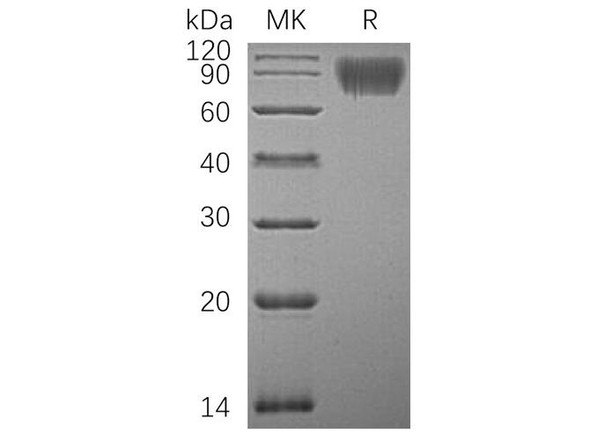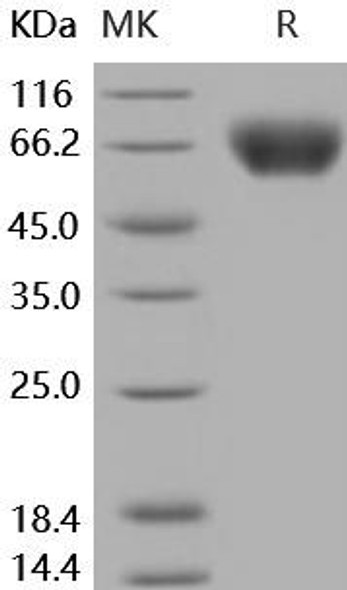Description
| Product Name: | Human ICAM-1/CD54 Recombinant Protein (His Tag) |
| Product Code: | RPES5948 |
| Size: | 20µg |
| Species: | Human |
| Expression Host: | HEK293 Cells |
| Synonyms: | Intercellular Adhesion Molecule 1, ICAM-1, Major Group Rhinovirus Receptor, CD54, ICAM1 |
| Mol Mass: | 50.5 kDa |
| AP Mol Mass: | 88 kDa |
| Tag: | C-His |
| Purity: | > 95 % as determined by reducing SDS-PAGE. |
| Endotoxin Level: | < 1.0 EU per μg of the protein as determined by the LAL method. |
| Bio Activity: | Testing in progress |
| Sequence: | Gln28-Glu480 |
| Accession: | P05362 |
| Storage: | Generally, lyophilized proteins are stable for up to 12 months when stored at -20 to -80°C. Reconstituted protein solution can be stored at 4-8°C for 2-7 days. Aliquots of reconstituted samples are stable at < -20°C for 3 months. |
| Shipping: | This product is provided as lyophilized powder which is shipped with ice packs. |
| Formulation: | Lyophilized from a 0.2 μm filtered solution of 20mM PB, 150mM NaCl, pH 7.4. Normally 5 % - 8 % trehalose, mannitol and 0.01% Tween80 are added as protectants before lyophilization. Please refer to the specific buffer information in the printed man |
| Reconstitution: | Please refer to the printed manual for detailed information. |
| Background: | Inter-Cellular Adhesion Molecule 1 (ICAM1) is a type of intercellular adhesion molecule continuously present in low concentrations in the membranes of leukocytes and endothelial cells. As an endothelial and leukocyte-associated transmembrane protein, ICAM1 is well known for its importance in stabilizing cell-cell interactions and facilitating leukocyte endothelial transmigration. The presence of heavy glycosylation and other structural characteristics lend ICAM1 binding sites for a number of immune-associated ligands. Notably, ICAM-1 binds to macrophage adhesion ligand-1 (Mac-1; ITGB2 / ITGAM), leukocyte function associated antigen-1 (LFA-1/integrin), and fibrinogen.ICAM-1 expressed by respiratory epithelial cells is also the binding site for rhinovirus, the causative agent of most common colds. |






